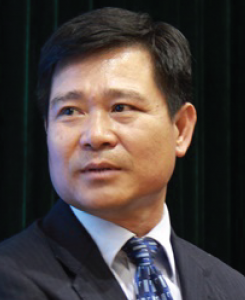
PROF. DR. Tran Thanh Hai was born in 1965 in Thai Nguyen Province. He completed his PhD program at the University of Regina, Canada in 2001. Since 2002, he joined the Hanoi University of Mining and Geology as a lecturer of, and a researcher in, Geology. He has been designated the Tittle of Associate Professor of Earth Science in 2009 and then the Tittle of Professor of Earth Science in 2018. Professor Trần Thanh Hải is a pioneer in application of comprehensive and qualitative approaches as well as Plate Tectonic Theory and other modern thinkings to regional geological interpretation, tectonic modeling and restoration of the evolution of the Earth crust, the relationship between tectonics and Earth resources as well as natural hazards in Vietnam and environs. He is the author and co-author of more than 60 scientific papers and 6 books, including more than 30 articles published in international journals and proceedings.
Work
Tran, H. T., Zaw, K., Halpin, J. A., Manaka, T., Meffre, S., Lai, C K., & Dinh, S., 2014. The Tam Ky-Phuoc Son shear zone in Centra Vietnam: tectonic and metallogenic implications. Gondwana Research, 26(1), 144-164.
This article was published in the Journal of Gondwana Research. This is one of the top-ranking and highly reputed SCI journal list in the field of Earth Sciences with a 5-Year Impact Factor (IF) (at 2015) of 8. This work has provided an important discovery of the tectonic evolution of the Indochina Geoblock – a subject that has been attracted major interests of both domestic and international geological community. The qualitative identification of a tectono-magmatic regime and related gold metallogeny that took place at 400 million years ago has opened up a new research approach in regional geology and given rise to follow-up researches on tectonic evolution and related metallogeny in Vietnam and Indochina region. With such new discoveries, although the research addressed an in-depth field of Geology with new scientific thinkings that need a long period of time to be implied, the publication has recently received at least 37 international citations and 872 reads (Google Scholar).